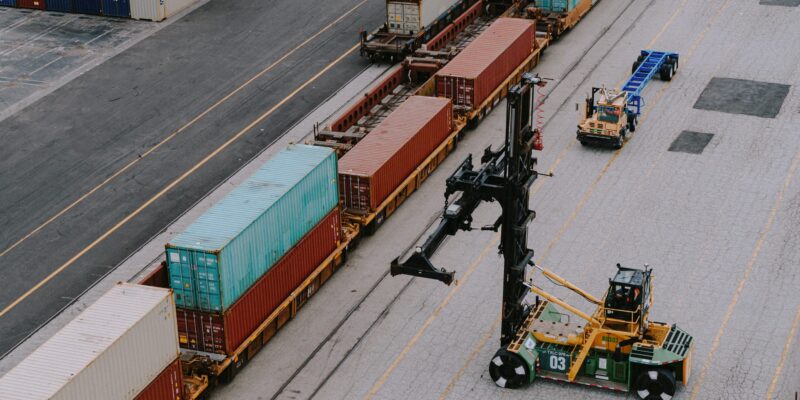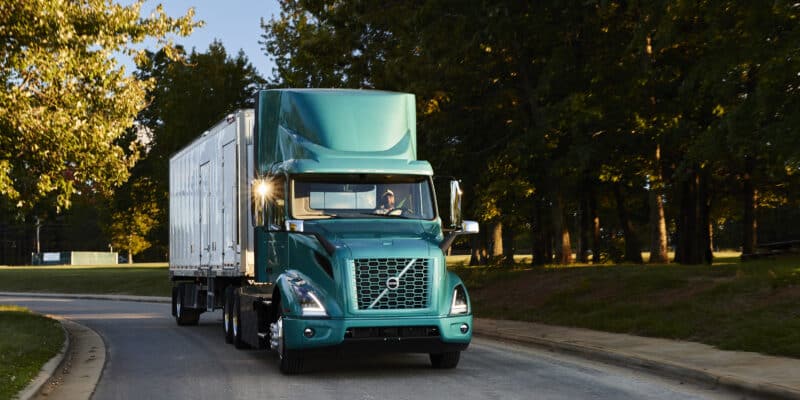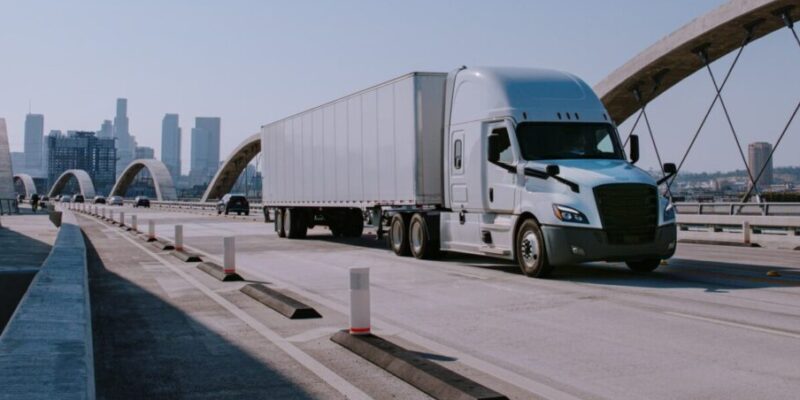2024 freight planning: 5 leading-edge strategies for a productive supply chain

After three years of pandemic-fueled disruption, the freight industry finally saw stability in 2023: a soft market with an abundance of capacity, an increase in truck driver employment, and falling truck rates that provided a window to find cost-cutting opportunities within supply chains.
With the market expected to remain soft in early 2024, logistics teams have breathing room to innovate and refine their transportation programs. Companies can set themselves up for success in the new year by investing in strategies—including AI-powered logistics, emissions visibility, and nearshoring—bolstered by using modern freight technology and partnering with managed transportation experts.
At Uber Freight, our experts keep a pulse on market conditions—not only to pinpoint potential tightening or headwinds, but also to identify key opportunities for growth and savings. As you prepare your logistics strategies for 2024, we recommend keeping these considerations top of mind to remain nimble and competitive.
Harness AI to make strategic decisions
“Artificial intelligence is here in a meaningful way, and its impact will be profound on logistics,” said Lior Ron, founder and CEO of Uber Freight, at our annual Deliver conference this year. “We can leverage advances in AI to shift from a reactive to a predictive logistics strategy.”
For example, recent advances in generative AI use large language models (LLMs) to generate insights from massive datasets—informing smarter, more proactive decisions. The technology boosts productivity across the transportation department, from efficiently matching loads with interested carriers to better predicting load delivery times.
Our annual Deliver Tech Showcase demonstrated additional benefits for shippers and carriers. Companies can use AI to quickly analyze data and surface insights, from load history and GPS pings to identifying supply-demand imbalances and recommending smart coverage options. Shippers can also harness the power of AI to simplify appointment scheduling and boost productivity.
Increase emissions visibility to improve sustainability
As companies work to reduce their carbon footprint and create more sustainable supply chains, there are two elements to prioritize: measuring carbon emissions output and adopting realistic solutions to reduce those emissions.
It’s notoriously difficult to track emissions, especially when using numerous modes of transportation. However, modern technology solutions are unlocking valuable data that improves emissions visibility, providing insight into where and how businesses are generating waste across different modes and regions.
When businesses are able to identify their carbon hotspots, they can map out plans to use different solutions that will reduce emissions for the short and long term: these include adding electric trucks to a fleet, optimizing network design to reduce empty miles, and investing in intermodal transportation.
Expand flexible procurement strategies
Pandemic-era disruption put a spotlight on the importance of agile procurement: strategies that are cost-effective, unrestricted by long-term contracts and annual RFPs, and enable shippers to toggle their resources based on market conditions. As businesses seek to capture savings while rates are low—and work with carriers that have the capabilities to help meet those savings KPIs—they can shift from using spreadsheets to procurement software to become more strategic.
Procurement technology helps transportation departments shorten decision-making cycles by using dashboards that automate contract freight procurement. Through these dashboards, shippers can conduct bids for freight of any size and access pre-configured routing guides and rates for their TMS. Access to procurement software also means access to market data, historical network data, and performance history, which inform the smartest options for lanes and modes.
Additionally, companies gain access to an expansive carrier marketplace that facilitates new types of partnerships and transportation modes, such as autonomous trucks.
Take advantage of Mexico’s nearshoring boom
Nearshoring to Mexico skyrocketed this year: the opening of 25 new industrial parks amounted to $35 billion in new investment, and 88% of U.S.-based small and mid-sized businesses reported using suppliers in Mexico. The Mexican government also published a new decree in October, granting incentives to companies planning to relocate operations to the country—potentially driving an additional $18.5 billion in investments in 2024.
To successfully capitalize on the nearshoring boom, businesses can work with their managed transportation providers to map out a cross-border operations plan that accounts for the complexities surrounding customs and export promotion programs.
As more shippers migrate to Mexico, demand for truck capacity will also increase. Addressing this demand will likely require diversifying transportation modes, such as pivoting from full truckloads to intermodal routes to maximize equipment utilization, consolidate orders, and minimize empty miles.
Leverage accurate data to inform network improvements
Vast amounts of supply chain data tell companies what changes need to be made to improve service and save money. However, in order to use that data effectively, it needs to be accurate and easily accessible in real-time.
Logistics teams can uplevel their data and analytics strategy by working with managed transportation partners to cleanse and organize data, conduct data audits, and help visualize it create actionable insights that inform cost, service, and delivery improvements. Teams can also leverage a transportation management system (TMS) to house and measure metrics ranging from warehouse utilization to carbon emissions.
Establishing a digital, data-driven strategy paves the way for accurate network analyses. In turn, shippers can make smarter, cost-effective changes across their supply chain, such as rightsizing fleets and consolidating warehouse space.
———
As logistics teams make a plan to innovate their transportation strategy, it’s vital to have a managed transportation partner and a TMS to effectively put these strategies into practice in a way that makes sense for their business. Connect with an Uber Freight representative today to learn how our team of experts and logistics solutions can help you achieve your 2024 objectives.



